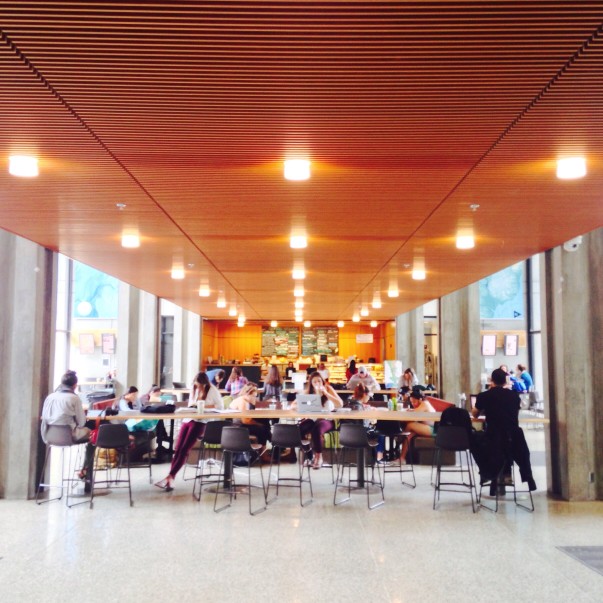While families gathered to share meals and celebrate the Christmas season last week, Charles Dicken’s classic character, Ebenezer Scrooge hunched over his accounting books, preparing to collect debts and steal joy from his most destitute neighbors.
Scrooge is a microfinancier. He serves as a banker to the poor and disenfranchised in his community, yet his motives are anything but pure.
At the opening of “A Christmas Carol,” Scrooge boasts, “Christmas is a very busy time for us, Mr. Cratchit. People preparing feasts, giving parties, spending the mortgage money on frivolities. One might say that December is the foreclosure season. Harvest time for the money lenders.”
Scrooge offers small loans with high interest rates to desperate neighbors and with a hard heart, reaps profits from their downturn. He “was a tight-fisted hand at the grindstone, Scrooge! A squeezing, wrenching, grasping, scraping, clutching, covetous old sinner!”
The modern day microfinance movement shares a lot in common with Ebenezer Scrooge. Both Scrooge and today’s microfinanciers make small loans to vulnerable people around the world and both offer financial tools in communities where there are few reliable options, but what makes the outcomes reportedly different?
The key to impactful microfinance isn’t small loans to poor people. Even the moneylenders and Scrooges of the world do that. It’s how microfinance is done that makes all the difference.
The Bad Guys
Among the worst perpetrators of microfinance abuse can be found in South Asia where microcredit is big business.
In India alone, over 30 million households have accessed a small loan with very limited qualification standards. “Loans have been given to rural people without checking whether they had the capacity to repay,” says Reddy Subrahmanyam, India’s most senior rural development official.
Once these unqualified loans have been provided, initial repayments are usually required within one week, giving the borrower very little time to establish any form of income-generating enterprise.
To make those first payments on time, people often have no other option than accessing an additional loan from a different microfinance company.
The chairman of India’s Microfinance Institutions Network, Vijay Mahajan, feels there is only one source to blame: “Multiple lending, over-indebtedness, [and] coercive recovery practices…has led to this situation.”
Stanford University economics professors Datar, Epstein, & Yuthas describe institution-centered microfinanciers as chasing after a high volume of clients and impressive repayment rates, oftentimes at detrimental costs to the clients themselves.
This institution-centered approach is also wreaking havoc in parts of Bangladesh, the birthplace of microfinance and home to nearly 20 million small loan recipients.
A company monitoring microfinance activity in Bangladesh, PKSF, reports 60 percent of borrowers take loans from other sources. Usury is also very prevalent as noted by Dr. Qazi Kholikuzzaman Ahmad, chairman of PKSF: “Interest on repayments… is a flat rate and can soon rise to anything between 40% and 100%.”
These “loan sharks” are the very people whom Muhammad Yunus, pioneer of the concept of microfinance, tried to put out of business when he made his first loan of $27 to a group of families in a Bangladeshi village in 1976.
The Good Guys
Professor Yunus and his Grameen Bank were awarded the Nobel Peace Prize in 2006 for his founding work in microfinance but stand in stark contrast to much of the immoral actions taken by extortionists throughout the developing world.
Grameen Bank practices an alternative, client-centered approach to microfinance. They prosper as their clients prosper. Several microfinance organizations have followed Grameen’s lead and prioritize understanding a community’s assets and challenges before injecting capital.
This approach has led to a surge of self-governing savings groups in remote areas across the globe providing access to capital within their own communities.
In a slum hidden in South Asia, women crowd into a small classroom for a savings group meeting with HOPE International. Sitting on mats on the floor, the women worship together joyfully as their savings group facilitator, Nirmitee, reads a passage from God’s word.
After devotions, the group praises God they no longer are indebted to moneylenders. Instead, by saving together, they’ve paid for stoves for their homes, medicines for their families, and weddings for their children.
Sheela, one of the savings group members, describes the client-centered approach to financial inclusion this way, “Whenever we gather in our group, we always share what’s going on in our lives, things with our families, and with our husbands… We encourage each other, help each other, and pray for each other.”
These examples serve as polarizing illustrations to Ebenezer Scrooge’s institutional-centered perspective on community banking.
In the end, however, even Scrooge found redemption in understanding the intangible value of the staff he employs and the clients he serves.
Chris Chancey and Hanna Ruth are both development representatives at HOPE International. Chris is based in Atlanta while Hanna resides in Minneapolis. Connect with them on Twitter, @chrischancey and @hannamruth.



